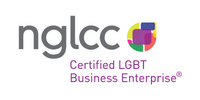We can all get confused about what is the correct thing to say. What is cisgender? What is BIPOC? Which pronoun am I supposed to use, and when do I ask? Which is the correct term: black, African American, or a person of color?
Diversity terminology is not simple and can be evolving, so know that there will be some with different definitions or opinions depending on who you talk to.
First Rule: If you are not sure, just ask.
Second Rule: Do your best to respect how others self-identify themselves, even if you don’t understand or agree.
Last Rule: We will all make mistakes or use the wrong term. Apologize and correct it.
Sex / Gender
Distinct from “sexual orientation,” gender refers to a person’s internal sense of being male, female, or something else. Since gender identity is internal, one’s gender identity is not necessarily visible to others. An example to help understand of self-identifying gender: If a woman had a mastectomy, she would continue to have the internal sense of being a woman and identify as a woman. Physical appearance or sex organs has nothing to do with your inner sense of your gender.
Male/Man and Female/Women – In the past, we have looked at gender as just binary. You are either male or female.
Cisgender – From the Latin cis-, meaning “on this side.” A person’s gender identity corresponds with the sex assigned at birth (SAAB.) For example, a person identified as female at birth who identifies as a woman would be a cisgender woman.
Gender Nonconforming or Gender Non-binary – A way of identifying and expressing oneself outside the binary gender categories of male/masculine and female/feminine.
Transgender – An umbrella term used to describe a person whose gender identity is something other than their Sex Assigned at Birth (SAAB). Someone can be transgender and make no changes to your physical appearance, fluctuating appearance, or fully transition into new gender identity.
Gender Fluid/Genderfluid – A person whose gender identification and presentation shifts, whether within or outside of societal, gender-based expectations. Being fluid in motion between two or more genders.
Intersex – General term used for various situations in which a person is born with reproductive or sexual anatomy that doesn’t fit the boxes of “female” or “male.” Sometimes doctors do surgeries on intersex babies and children to make their bodies fit binary ideas of “male” or “female.”
Pronouns and Why They Are Important
Pronouns are words that replace nouns in a sentence, such as “you,” “we,” or “they.” We use pronouns most of the time without giving them a second thought. But when working with people from all gender identities and gender expressions, it is essential to consider our use of gender-specific pronouns. Pronouns are part of a person’s identity, just like names are. It’s critical that, like a name, we take the time to learn preferred pronouns rather than making assumptions about how to refer to people in conversation or writing. While it may be our habit to refer to everyone as “he” or “she” based on appearances, we need to recognize that gender is a spectrum, and no one can assume a person’s gender or preferred pronouns based on their appearance.
He/him/his – These pronouns can refer to people who identify as boys or men but are not limited to male people. While he can be an affirming pronoun for some people, we can’t assume that all people who appear to be masculine affirm a male identity and use he/him/his pronouns.
She/her/hers – She/her/hers refer to people who identify as girls or women but are not limited to female people. Likewise, we can’t assume that all people we assume who appear to be feminine use or affirm female identity and use she/her/hers pronouns.
They/them/their – In addition to its use as a plural pronoun, they/them/their has a rich history of use as a gender-neutral singular pronoun in the English language. The Oxford English Dictionary sources the singular they as far back as 1375. They are often used in reference to a singular person whose gender pronouns are unknown, such as in the sentences “Someone left their umbrella here. How can we find out who they are?” or “I’m not sure what their pronouns are. I should ask them next time.” It’s also essential to honor that some people specifically use they/them/their pronouns instead of he or she to represent their identity outside of the gender binary.
Ze/hir/hirs, ze/zir/zirs – The ze/hir, ze/zir pronoun sets come from the trans community as another gender-neutral pronoun set. It’s up to each individual to decide which pronoun best fits them and their identities. Ze is typically pronounced like the letter Z. Hir is generally pronounced like the word “here.” Zir is typically pronounced like “here” with a z in front.
Sexual Orientation
LGBTQ+ or LGBTQIA – An acronym for Lesbian, Gay, Bisexual, Transgender, Queer, Intersex, Asexual
Straight – Heterosexuality is romantic attraction, sexual attraction, or sexual behavior between persons of the opposite sex or gender.
Gay – sexually attracted to someone of the same sex or homosexual.
Lesbian – homosexual woman
Bisexual – sexually attracted not exclusively to people of one particular gender; attracted to both men and women.
Transgender – Although transgender is included in the LGBTQ+ community, The term transgender is not referring to their sexual orientation but gender identity. A transgender person is not necessarily gay.
Queer – umbrella term used to describe LGBTQ+ community.
Asexual – someone who does not experience sexual attraction to anyone. A grey-asexual (grey ace/grey-a) person may experience sexual attraction very rarely or only under specific circumstances. Demisexual people only experience sexual attraction after developing a strong emotional bond with someone
Pansexual, Omnisexual – Terms used to describe people who have a romantic, sexual or affectional desire for people of all genders and sexes. Has some overlap with bisexuality and polysexuality
Spectrum – A range or sliding scale. Aspects of one’s identity like sexual orientation, gender identity, and gender expression exist on a spectrum. For example, with sexual orientation, the attraction to men, women, or someone of another gender exists on separate spectrums. Someone might feel a little attracted to men, very much attracted to women, and moderate attraction to people outside this binary.
Race Terminology
Race is not necessarily just skin color but could also be cultural, heritage, or ethnic classification such as the Jewish race. A social construct that divides people into distinct groups based on characteristics such as physical appearance, ancestral heritage, cultural affiliation, cultural history, ethnic classification based on the social, economic, and political context of a society at a given period time.
Which is Appropriate: Black, African-American, or Person/People of Color?
POC (People of Color)- Generally defined as anyone not white or Caucasian. Collective term for men and women of Asian, African, Latinx, and Native American backgrounds. Person/people of color is more of an umbrella term.
Black refers to people with all possible kinds of skin pigmentation, from the darkest through to the very lightest skin colors if others believe them to have African ancestry.
African American – Ethnic group consisting of Americans with partial or total ancestry from any of the black racial groups of Africa.
BIPOC – Black, Indigenous, and People of Color
Multi-Racial – Having two or more races within your genealogy. People who identify with more than one race also may use terms such as “biracial” and “mixed-race” to describe themselves
Depending on who you talk to, any term may be appropriate. There are those who self-identify as black and others who self-identify proudly as African American. Many others are black immigrants but not of Africa heritage but other counties such as Haiti, Jamaica, or Ethiopia. They would not usually self-identify as African American but as terms such as Jamaican-American.
Hispanic or Latinx -which is correct?
Latino/Latina – Someone who is native of, or descends from, a Latin American country. Latino/Latina includes people from Brazil and excludes those born in or descended from Spain. Not all Brazilians identify themselves as Latino/Latina, but many do. Thus, Hispanics refer more to language, while Latino/Latina refers more to culture. Latinx is gender-neutral instead of Latino (male) and Latina (female.)
Hispanic – Someone who is a native of, or descends from, a Spanish-speaking country. It’s a Spanish word that means “belonging or relating to Hispania, Spain,” and “belonging or relating to Hispanoamérica (countries in the Americas where Spanish is spoken).” Hispanic came into use officially in the United States in the early 1970s.
Hispanic or Latinx terminology can also be regional. Hispanic tends to be utilized more on the East Coast and Texas, whereas Latinx tends to be used more on the West Coast.
A Person with Disability
Utilize the term person with a disability instead of a “disabled person.” A person with disability stresses the humanity of the individuals and avoids objectification. … Terms such as “victim” or “sufferer” should not be used to refer to people who have a disability or disease as this is dehumanizing and implies powerlessness.
Neurodiverse/ Neurodiversity – When neurological differences are recognized and respected as other human differences or variations. These differences can include Dyspraxia, Dyslexia, Attention Deficit Hyperactivity Disorder, Dyscalculia, Autistic Spectrum, and Tourette Syndrome.
Physical Disability – A physical condition that affects a person’s mobility, physical capacity, stamina, or dexterity. This can include brain or spinal cord injuries, multiple sclerosis, cerebral palsy, respiratory disorders, epilepsy, hearing and visual impairments, and more
Mental Disability – Also called mental health disorders, refers to a wide range of mental health conditions — disorders that affect your mood, thinking, and behavior. Examples of mental illness include depression, anxiety disorders, schizophrenia, eating disorders, and addictive behaviors.
Other Diversity Terminology
DEI/DIB – Diversity v. Inclusion v. Belonging: Diversity typically means proportionate representation across all dimensions of human difference. Inclusion means that everyone is included, visible, heard, and considered. Belonging means that everyone is treated and feels like a full member of the larger community and can thrive
Equity – The fair treatment, access, opportunity, and advancement for all people, while at the same time striving to identify and eliminate barriers that prevent the full participation of some groups. The principle of equity acknowledges historically underserved and underrepresented populations and that fairness regarding these unstable conditions is necessary to provide equal opportunities to all groups.
First-Generation Immigrants – The first foreign-born family members to gain citizenship or permanent residency.
Diversity Value Proposition – Demographic diverse increases the diversity of perspective and experiences. When these perspectives are integrated into decision-making, diverse groups outperform homogeneous groups.
Psychological Safety – The belief that you won’t be punished or humiliated for speaking up with ideas, questions, concerns, or mistakes. When you have psychological safety in the workplace, people feel comfortable being themselves.
Microaggression – The verbal, nonverbal, and environmental slights, snubs, insults, or actions, whether intentional or unintentional, communicate hostile, derogatory, or negative messages to target persons based solely upon discriminatory belief systems.
Tokenism – Performative presence without meaningful participation. For example, a superficial invitation for the participation of members of a specific socially oppressed group is expected to speak for the whole group without giving this person a real opportunity to speak for her/himself.
Implicit Bias or Unconscious Bias – Negative associations expressed automatically that people unknowingly hold and that that affect our understanding, actions, and decisions
Underrepresented – Inadequately represented in the workforce of a particular activity. This term describes how women and minorities are represented in specific grade levels and job categories. The percentage of women and minorities in the labor market is used as a standard to determine underrepresentation.
ERG – Abbreviation for Employee Resource Group. Typically, an employer-sponsored or –a recognized affinity group of those who share the interests and concerns common to those of a particular race, ethnicity, gender, or sexual orientation. ERG’s are intended to build community, strengthen networks and supportive relationships, and improve the mobility and retention of diverse people.
Helpful Resources
- Racial Equity Resource Guide
- Resources.workable.com
- EEOC
- University of Washington
- LGBTQIA Resource Center Glossary (UC Davis)
- Harvard HR
- North Dakota Health
Keep Your Business Up to Speed with DEI Recruiting and Consulting





